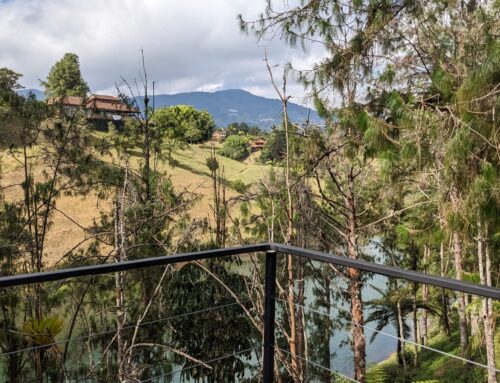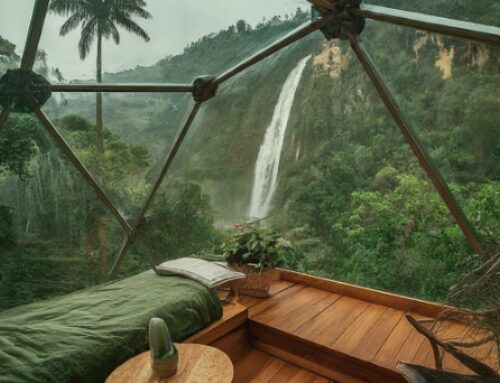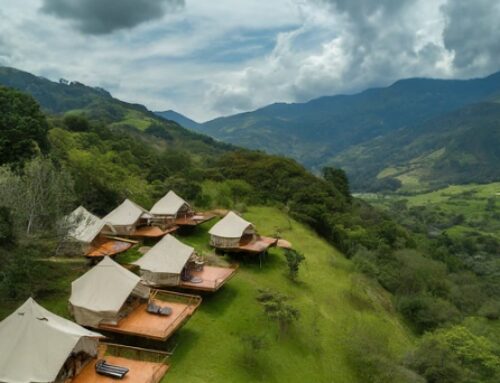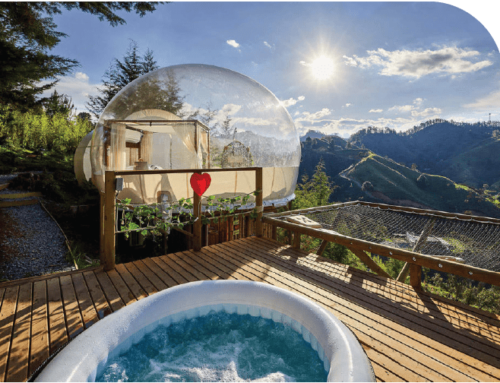
The worldwide glamping market has been growing by leaps and bounds over the past few years, with year-over-year increases as high as 26%. Forecasts extending to 2030 have predicted long-term growth; even if the industry doesn’t keep growing at the same rate, there’s little doubt that it will continue to be in high demand worldwide. Already we can see that key players are employing targeted strategies to meet demand, which they’ll have to keep doing in order to continue operating.
Glamping in Medellin is On the Same Trajectory!
What is glamping, and why is it so popular? Glamping is an upscale form of camping that brings the luxury of a resort to the relaxing aspects of nature. Glampers can feel closer to the natural world, without leaving the comforts of home. In fact, glamping usually goes well beyond the comforts of home in the amenities that are offered. These include everything from personal hot tubs to horseback riding, and are meant to provide a refreshing experience for both the body and the mind.
Glamp sites aren’t simply located anywhere in the great outdoors; they focus on bringing people into contact with the best that nature has to offer. Especially scenic locations are usually chosen, such as isolated wilderness regions, private estates, or national parks. For example, Medellin has many glamping locations in places such as Guatape, El Retiro, La Ceja and Rio Negro.
The most significant influence on the glamping industry comes from North America, and especially the United States. Since the U.S. is essentially an industry leader, any significant changes in the market there will probably affect the glamping industry elsewhere. For example, if the industry failed to keep up with demand in the U.S., patrons might lose interest and start looking for alternative options. This in turn could influence trends in other countries, leading to a general drop in demand for glamping. Europe isn’t quite as influential in the glamping industry compared to the U.S., but it still plays an important role in the industry’s development.
However, the influence of the U.S. on glamping is currently going in the other direction. Glamping sites are getting increasingly creative and varied, leading to sites in other countries following their example. Some glamping sites are even leaning into the “glamour” aspect to offer luxury experiences for the ultra-rich, with amenities like heated floors, private chefs, and personal butlers. This has expanded the glamping industry significantly, allowing it to offer a level of service that previously wasn’t available.
Large players are also influencing the industry all over the world, which makes it possible to provide more consistent experiences. Boutique glamping operations set their own rules, which means that lapses in quality wouldn’t have much of an impact. However, if a glamping site is part of a larger organization, standards would be monitored and maintained at each location.
The rapid growth of the glamping industry has unfortunately coincided with the global pandemic, which put a stop to most tourism for well over a year. Another issue was that glamping businesses couldn’t access the materials or goods they needed in order to keep operating; even if they were allowed to be open, they couldn’t due to supply chain issues. This was a serious blow, but the majority of glamping sites are clearly bouncing back. At this point, the main obstacle to growth is competition from within the industry. There may be high demand, but there are also numerous glamping sites competing for potential clients. If a glamping site can’t keep up with the same quality of service or amenities as competitors, they may not be able to stay in business over the long term.
What is driving the glamping market today?
What’s driving the glamping market today? Adults, teenagers, and young children are all fans of glamping, since it’s a family-friendly activity that pretty much anyone can enjoy. Popular types of glamping include yurts, tents, teepees, cabins, pods, and more. These are the regions that are currently leading the glamping industry:
- North America (U.S., Mexico, and Canada)
- Europe (Italy, France, Germany, the U.K., Turkey, and Russia)
- Africa and the Middle East (South Africa, Nigeria, Egypt, UAE, and Saudi Arabia)
- South America (Colombia, Argentina, and Brazil)
- Asia-Pacific (Vietnam, Malaysia, the Philippines, Thailand, Indonesia, Australia, India, Korea, Japan, and China)
Part of the reason why glamping is rising in popularity is due to millennials and Gen Z, who tend to embrace eco-friendly principles, but aren’t always so interested in experiencing the good, the bad, and the ugly parts of nature for themselves. Glamping is appealing because it’s more comfortable than camping, but also because many glamping businesses also operate in an eco-conscious way. They may use renewable energy or sustainable building materials, or work to minimize waste. They also usually promote wellness through connection with nature, mindfulness, and relaxation, all of which are popular among the target demographics.
Another factor in the popularity of glamping is that it takes away the need for 90% of the preparation compared to camping. Rather than having to take every necessity along with them, from tents to bedding, the glamp site provides pretty much everything except the food. Some of the more upscale sites include meals prepared by chefs, but that’s the exception rather than the rule. This means that there’s no need to be self-sufficient on a glamping trip; it doesn’t really take any more planning than a weekend getaway at a regular spa or hotel.
Social media has also played a role in the growth of the glamping industry. Most people can instantly identify “Instagram-worthy” photo opportunities, and even budget glamping sites seem custom-made to be featured on social media. Many influencers love going glamping for the photo opportunities alone; plus, they may be able to collaborate with the business in exchange for a discount.
With a predicted annual growth rate of over 10% between 2023 and 2030, it sounds like the glamping industry has a lot to look forward to. This is also good news for glamping enthusiasts, who will have more choices than ever. Whether they’re going on Medellin tours in Colombia, or they’re enjoying a luxury getaway in Africa, tourists all over the world can enjoy glamping.




